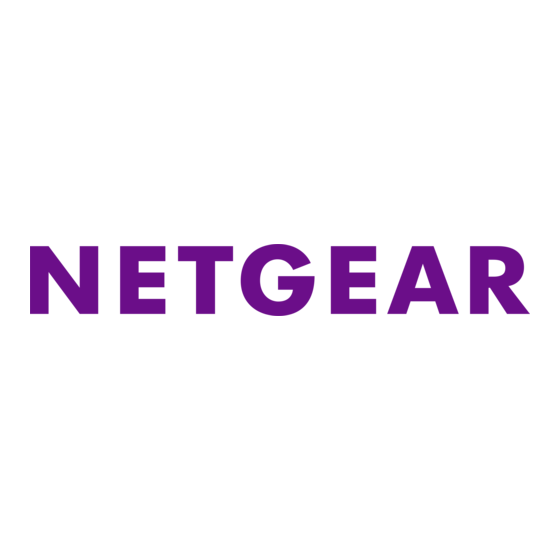Advertisement
CGD24G Wireless Cable Modem Gateway
Follow these quick steps to install your CGD24G gateway. These instructions
assume that you will use an Ethernet cable to connect a computer to the gateway.
Note: For instructions on connecting computers to the CGD24G gateway using
USB, see the User Manual on the Resource CD that came with your product.
Package Contents
Verify that your product package contains the following items:
•
CGD24G Wireless Cable Modem Gateway
•
AC power adapter
•
Category 5 (CAT5) Ethernet cable
•
USB cable
•
Two (2) stand brackets
•
Resource CD
If any of the parts are incorrect, missing, or damaged, contact your NETGEAR
dealer. Keep the carton, including the original packing materials, in case you need
to return the product for repair.
Before You Begin...
Make sure that you have the following:
•
A computer with an active Ethernet port with DHCP enabled.
•
An active account with your Internet Service Provider (ISP) for data services.
•
Depending on how your ISP set up the Internet account, you might need one or
more of these configuration settings to connect the gateway to the Internet:
-
Host and Domain Names
-
ISP Domain Name Server (DNS) Addresses
•
Each computer that will connect to the gateway must have either an installed
Ethernet Network Interface Card (NIC), USB Host port, or 802.11b or 802.11g
wireless adapter.
Next, Connect the Gateway
Installation Guide
To connect the gateway:
1. Turn off your computer. Use the
coaxial cable provided by your cable
company to connect the CGD24G
gateway cable port (A) to your cable
line splitter or outlet.
2. Connect the Ethernet cable (B) from
your CGD24G gateway's LAN port to
the Ethernet adapter in your computer.
3. Plug in your CGD24G gateway and
wait about 60 seconds for the LEDs to
stop blinking.
4. Verify the following:
The power LED is lit after
turning on the gateway.
The cable link LED is solid
green, indicating that the
gateway initialization is
complete and a link has been
established to the cable
network.
5. Now, turn on your computer.
If software usually logs you in to your
Internet connection, do not run that
software or cancel it if it starts
automatically.
One or more local LED(s) on the front
of the gateway should be lit for any
connected computers.
Then, Connect to the Internet
To configure the gateway and connect to the Internet:
1. Using the computer that you first used to access your cable modem Internet
service, connect to the gateway by typing http://192.168.0.1 in the address
field of your Internet browser.
A
2. For security reasons, the gateway has its own user name and password. When
prompted, enter admin for the user name and password for the password.
After logging in, you will see the Gateway Status screen.
3. Select Basic Settings on the
upper left of the main menu of the
gateway. The Basic Settings
screen displays.
4. Verify that the Cable Network
Settings field is set to DHCP,
which is the default setting.
When the Cable Network Settings
are set to DHCP, the network
configuration settings are
automatically downloaded from
your ISP.
5. If you changed the Cable Networks Settings field, you must click Apply so
that the change takes effect.
B
6. Verify your Internet connection.
Note: Some cable Internet companies require you to notify them when you
replace the original cable modem so that they can register the MAC addresses.
If you had difficulty connecting to the gateway or to the Internet, see the
"Troubleshooting" chapter of the User Manual on the Resource CD.
Advertisement
Table of Contents

Summary of Contents for NETGEAR CGD24G
-
Page 1: Package Contents
Resource CD are set to DHCP, the network complete and a link has been configuration settings are If any of the parts are incorrect, missing, or damaged, contact your NETGEAR established to the cable automatically downloaded from network. dealer. Keep the carton, including the original packing materials, in case you need your ISP. -
Page 2: Technical Support
©2010 by NETGEAR, Inc. All rights reserved. NETGEAR and the NETGEAR logo are registered trademarks of December 2010 NETGEAR, Inc. in the United States and/or other countries. Other brand and product names are trademarks or registered trademarks of their respective holders. Information is subject to change without notice.











Need help?
Do you have a question about the CGD24G and is the answer not in the manual?
Questions and answers